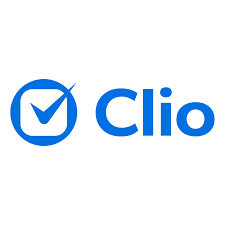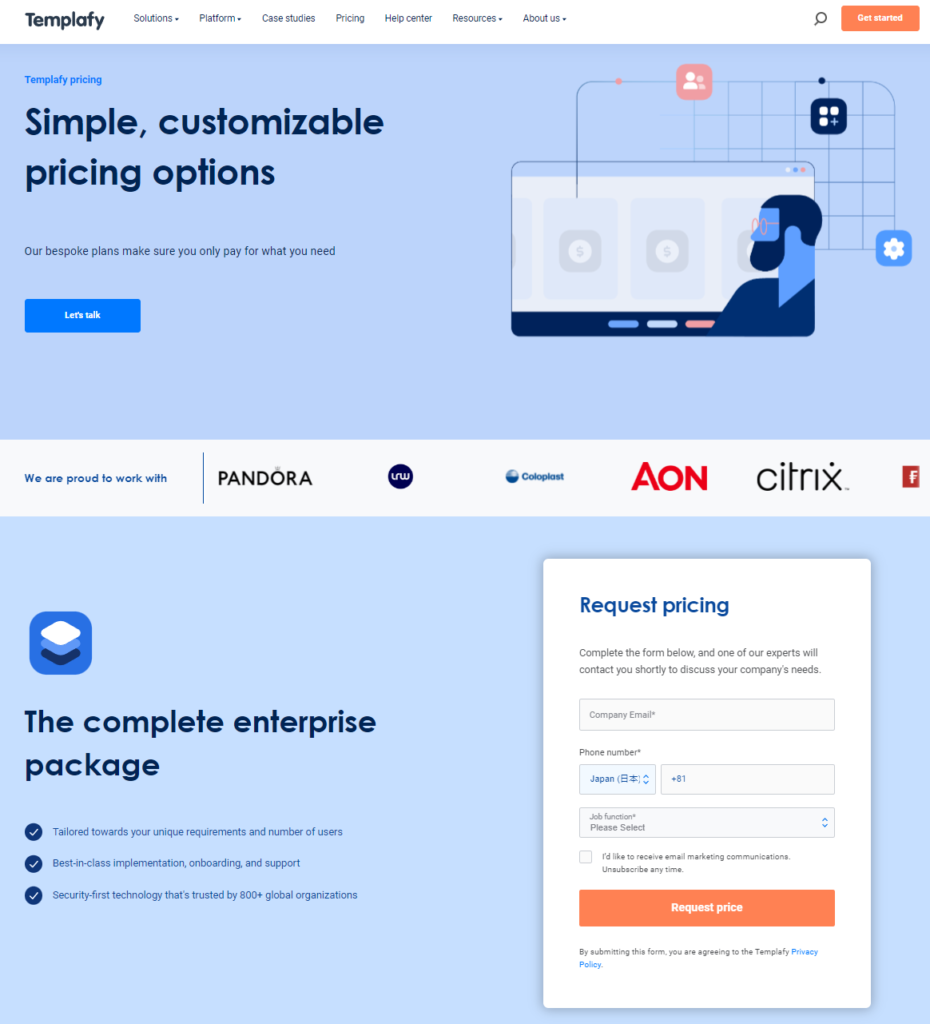In the realm of document management, choosing the right tool is essential for enhancing productivity and maintaining compliance. Clio and Templafy are two leading solutions, each catering to specific professional needs. This detailed comparison aims to help you decide which tool is the best fit for your organization’s document management requirements.
Clio | Templafy |
|---|---|
| G2 Score – 4.6 out of 5 stars | G2 Score – 4.2 out of 5 stars |
| TrustRadius Score – 7/10 | TrustRadius Score – 8.8/10 |
Document Creation and Template Management
A critical aspect of any document management system is its capability in document creation and template management. Clio and Templafy offer unique approaches to these tasks, making them suitable for different professional environments.
Clio: Tailored for Legal Professionals
Clio is a document management tool designed specifically for the legal industry. It excels in managing case files and legal documents, providing lawyers with a powerful suite of tools to create, organize, and track important documents efficiently. One of Clio’s standout features is its document automation, which allows users to quickly generate legal documents by automatically filling in client information into predefined templates.
This automation not only saves time but also reduces the potential for errors, ensuring that documents are accurate and comply with legal standards. Clio’s document management system is integrated with its case management features, allowing attorneys to associate documents directly with specific cases. This integration ensures that all documents are easily accessible and organized according to the relevant case, streamlining workflow and improving productivity.
Templafy: Streamlining Document Creation for Enterprises
Templafy, on the other hand, focuses more broadly on template management and document creation for enterprises across various industries. It offers a dynamic template management system that ensures all documents produced are up-to-date and aligned with the latest corporate branding guidelines. Templafy’s strength lies in its ability to integrate seamlessly with commonly used office applications, such as Microsoft Office and Google Workspace, facilitating document creation directly within the tools employees already use.
This integration is particularly valuable for ensuring consistency across all company documents, no matter where they are created or stored. Templafy automates the insertion of up-to-date content such as legal disclaimers, logos, and bios, reducing manual efforts and maintaining brand consistency. This level of automation and integration is especially beneficial for large organizations that need to manage thousands of documents and ensure that each one adheres to strict corporate standards.
Integration Capabilities
Integration capabilities are essential for document management systems as they need to work seamlessly with other software tools that businesses use daily. Let’s explore how Clio and Templafy handle integrations, which can greatly enhance efficiency and user satisfaction.
Clio: Specialized Integration for Legal Workflows
Clio’s integration capabilities are finely tuned to support legal workflows. It offers seamless connections with other tools commonly used in law offices, such as time tracking software, accounting systems, and email platforms like Outlook and Gmail. This integration ensures that all aspects of a case are managed within a unified system, from document management to billing and communication.
One of the key strengths of Clio is its ability to integrate with legal-specific tools. For example, it connects with law practice management software, providing attorneys a comprehensive solution that facilitates not only document handling but also client management and case filing. This specialized integration is crucial for law firms that need their array of tools to work cohesively, ensuring that all data relevant to a case is easily accessible and securely managed.
Templafy: Enterprise-Wide Integration for Efficiency
Templafy excels in its integration with enterprise IT ecosystems. Unlike Clio, which focuses on legal tools, Templafy integrates with a broader range of office suites and digital asset management systems. This wide-ranging integration capability makes it an ideal choice for businesses that operate across multiple departments and need a unified approach to document management.
Templafy’s integration extends to major document creation tools like Microsoft Office and Google Workspace, allowing users to access and utilize corporate templates and assets right within the applications they use every day. This integration is not just about convenience; it also ensures that documents are consistently compliant with corporate branding and legal standards, regardless of the department or user creating them.
Moreover, Templafy can connect with CRM systems, HR platforms, and other enterprise resources planning (ERP) systems, enabling organizations to automate and streamline the creation of documents based on data from these systems. This level of integration supports operational efficiency by reducing manual data entry and ensuring that all documents are up-to-date and accurate.

Related: Check out our free SEO suite

Security Features and Compliance
In any document management system, security features and compliance capabilities are critical, especially for industries that handle sensitive or confidential information. Let’s compare the security and compliance aspects of Clio and Templafy to see which system offers better protection and adherence to regulatory standards.
Clio: Robust Security Designed for Legal Compliance
Clio is built with the specific needs of the legal sector in mind, which includes stringent security and compliance requirements. It provides comprehensive data protection measures to safeguard sensitive client and case information. Clio uses industry-standard encryption for data in transit and at rest, ensuring that all client information is securely stored and protected from unauthorized access.
Moreover, Clio is compliant with various legal industry standards, such as HIPAA in the U.S., which is crucial for attorneys handling health information. It also supports GDPR compliance for firms operating or serving clients in the European Union. These compliance features are integrated into the platform, making it easier for law firms to adhere to complex regulations without additional effort.
Clio’s security infrastructure includes regular audits and real-time monitoring to detect and respond to potential security threats promptly. This proactive approach ensures that the system remains secure and that client data is always protected.
Templafy: Enterprise-Level Security and Global Compliance
Templafy is designed to meet the security and compliance needs of large enterprises across various industries. Like Clio, it employs strong encryption to protect data both in transit and at rest. However, Templafy extends its security measures to include comprehensive user access controls and authentication protocols, which are crucial for businesses with multiple user levels and departments.
Templafy’s compliance capabilities are broad, covering global standards such as GDPR, SOC2, and ISO certifications. These are particularly important for multinational corporations that need to ensure their document management practices comply with international data protection laws and industry-specific regulations.
Additionally, Templafy includes security features tailored to protect corporate branding and intellectual property, which are critical assets for any enterprise. It ensures that all documents created through the system adhere to corporate security policies, reducing the risk of data leaks or non-compliance.
Customer Support and User Experience
The level of customer support a software provider offers and the overall user experience are critical factors in ensuring smooth operation and adoption of any document management system. Let’s evaluate how Clio and Templafy perform in these areas, highlighting their strengths and differences.
Clio: Dedicated Support for Legal Professionals
Clio places a strong emphasis on providing exceptional customer support tailored to the needs of legal professionals. Its support team is trained specifically in legal workflows and the challenges that law firms face, which means they can provide highly relevant advice and solutions. Clio offers multiple support channels, including phone, email, and live chat, ensuring that users can reach out in whatever way is most convenient for them.
Additionally, Clio’s online resources are extensive. These include a comprehensive knowledge base, webinars, and training videos, all designed to help users maximize their use of the platform. For new users, Clio offers onboarding sessions and ongoing training to ensure that law firms can fully leverage the tool from the start.
Templafy: Streamlined Support for Enterprise Users
Templafy also offers strong customer support, though its approach is more geared toward the needs of enterprise users across various industries. The support provided is comprehensive, with a focus on ensuring that businesses can integrate Templafy smoothly into their existing IT infrastructure. Support channels include email, live chat, and a dedicated customer service portal where users can log and track support tickets.
Like Clio, Templafy provides a wealth of online resources and a community forum where users can find answers to common questions and share insights. Templafy also offers training modules and detailed user guides designed to help employees use the platform effectively, with a particular focus on maximizing productivity and ensuring compliance in document creation.
Pricing Strategies
Understanding the pricing structures of document management systems is crucial, as it influences your budgeting and the value you derive from the investment. Let’s compare the pricing models of Clio and Templafy to determine which might offer better cost-effectiveness and scalability for your business needs.
Clio: Flexible Pricing Tailored to Law Firms

Clio offers a tiered pricing model that caters specifically to law firms of various sizes, from solo practitioners to large firms. Its pricing is designed to accommodate the unique needs and budgets of legal professionals, with plans that scale in features and cost. The basic tier provides essential document management and case management functionalities, while higher tiers include advanced features like performance reporting, client portal, and priority support.
This flexibility allows law firms to choose a plan that fits their specific needs without overpaying for unnecessary features. Additionally, Clio frequently offers bundled services, combining document management with other legal practice management tools, which can provide additional value for firms looking for an all-in-one solution.
Templafy: Enterprise-Focused Pricing Model

Templafy targets larger enterprises and thus structures its pricing model to suit this demographic. The platform does not typically offer a per-user pricing publicly, as its solutions are often customized to fit the specific needs of an organization. This custom pricing approach involves consultations to determine the company’s requirements, ensuring that the solution provided maximizes efficiency and compliance across the organization.
While this means that pricing can vary widely depending on the scope of deployment and features required, it also means that enterprises can tailor the solution to their exact needs, potentially saving money in the long run by optimizing their document management processes and ensuring brand consistency across global operations.
Conclusion
Choosing between Clio and Templafy for your document management needs is a decision that hinges on understanding the unique capabilities and strengths of each platform, as well as aligning those with the specific requirements of your organization.
Clio is meticulously designed for legal professionals, offering a suite of features that cater directly to the needs of law firms. Its tiered pricing model provides flexibility, allowing law firms of all sizes to select a plan that best suits their budget and feature requirements. Clio excels in areas such as case management integration, legal document automation, and tailored legal workflows, making it an invaluable tool for legal practices seeking efficiency and compliance in their document handling processes.
Templafy, on the other hand, is geared towards larger enterprises across various industries, focusing on ensuring document consistency and compliance with corporate branding and regulatory standards. Its strength lies in its ability to integrate seamlessly with existing business software, enhancing document creation and management across the entire organization. Templafy’s custom pricing model is designed to meet the complex needs of multinational corporations, offering a scalable solution that grows with the enterprise.
Read Next:
- GetResponse vs Zoho Campaigns: The Best Email Marketing Tool for 2024
- AWeber vs ActiveCampaign: The Best Email Marketing Tool
- Constant Contact vs Campaigner: Best Email Marketing Tool
- GetResponse vs Omnisend: The Best Email Marketing Tool for 2024
- AWeber vs Benchmark Email: The Best Email Marketing Tool






















Comments are closed.